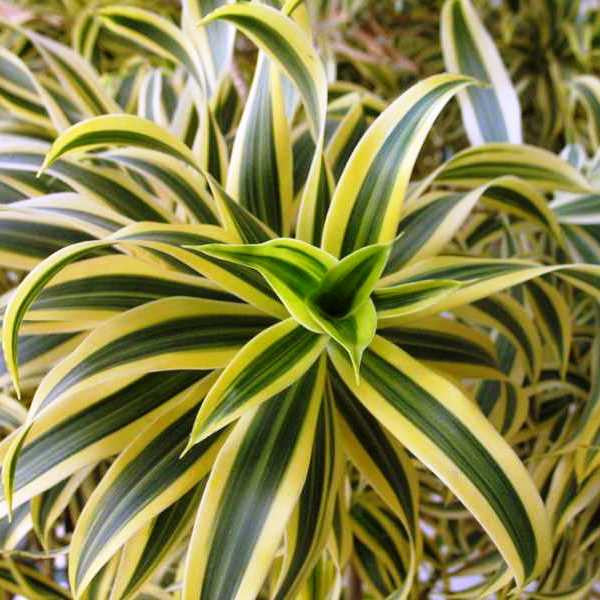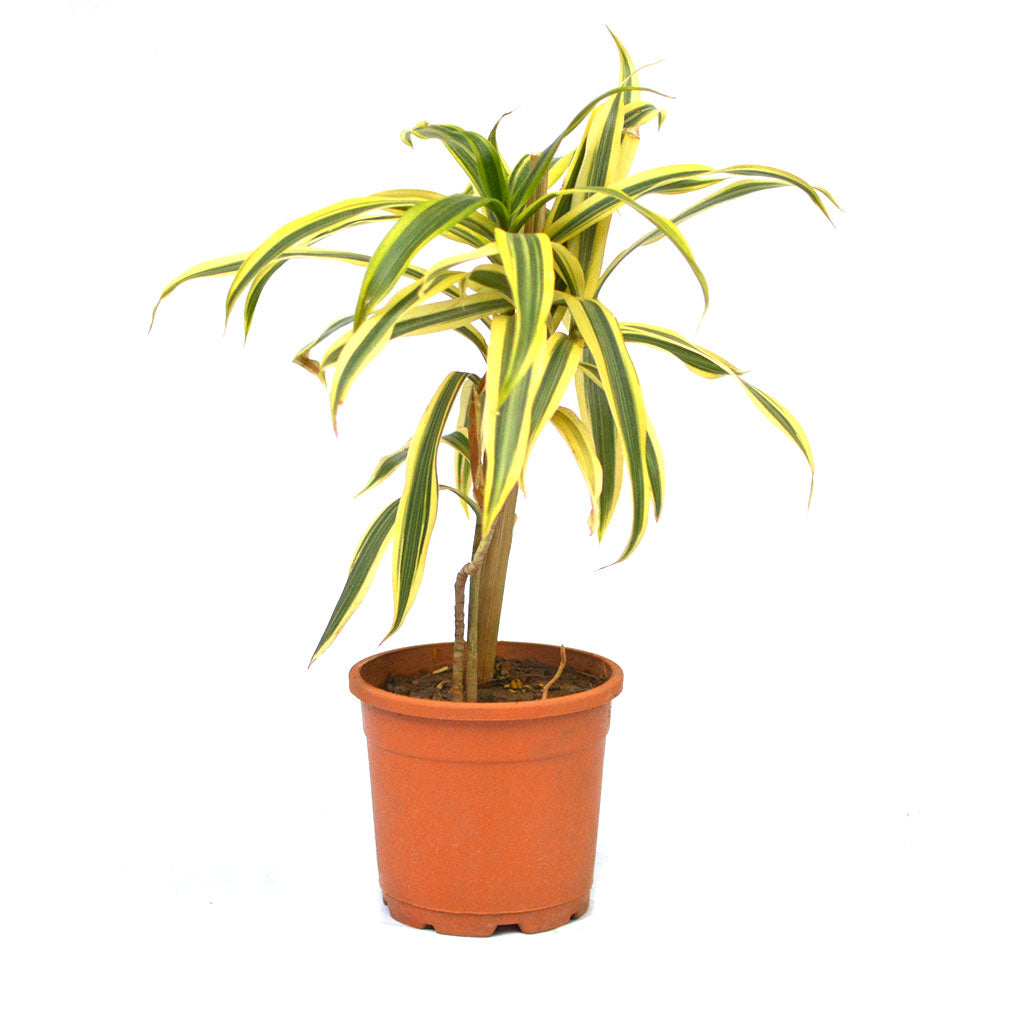Song of India
The song of India plant is a species from the dracaena genus (dracaena reflexa) that has become a popular house plant.. These plants are fairly easy to grow and maintain. The leaves are the main attraction to this species.These leaves are glossy that arch over and grow up to 1ft long and a couple of inches or so wide
Origin: Madagascar and other Indian ocean islands
Height: Grows slowly but can reach 3 ft or more
Light: Song of India does need to be kept at a brightly lit spot without direct sunlight.
Water: Keep evenly moist, although if you have to err, do so on the dry side. (But keeping it too dry will result in brown leaf tips.). Be sure to use a container with a drainage hole and never allow the plant to stand in water.
Humidity: Beware of low humidity. If the humidity drops below 40 percent for an extended time, the tips of the leaves can turn brown. Try misting the plant every day to provide humidity. It s also sensitive to fluoride and excessive salts, so try to use nonfluoridated water and flush monthly to remove fertilizer salts.
Temperature: Growth may cease completely below 70 F, but will resume when warmer weather returns.
Soil: Any good potting mix that drains well.
Fertilizer: During growing, fertilizer with slow-release fertilizer or use a 20-20-20 liquid fertilizer at half-strength every month. Iron deficiency can result in yellowing leaves between the veins treat with an iron drench.
Pests: They are susceptible to thrips and mealybugs.
Pruning: You will find the lower leaves on this plant turn yellow after a period of time which is normal. Remove the lower leaves when they begin to yellow. You may also want to clean the leaves with tepid water using a soft sponge - to help it look attractive.
Eliminates: Dracaena reflexa is one of the most efficient plants at removing formaldehyde from the air in your home, as well as other VOCs, including benzene, trichloroethylene, and xylene
Caution: Dracaena plants are not considered poisonous to humans, but are extremely poisonous to dogs and cats with a #2 toxicity level.




















